- work •
- statement •
- reviews + essays •
- resume •
- contact
deankessmann
equivalent to what?
archival pigment prints, 9 x 12 inches, (image), 11 x 14 inches (paper), 2018 (printed 2025)
edition 1/1 with 1AP
archival pigment prints
9 x 12 inches, (image), 11 x 14 inches (paper),
2018 (printed 2025)
edition 1/1 with 1AP
Read a short description of this project
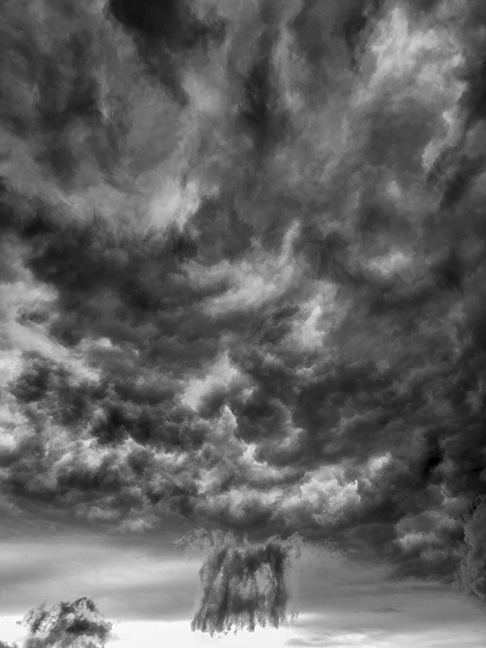


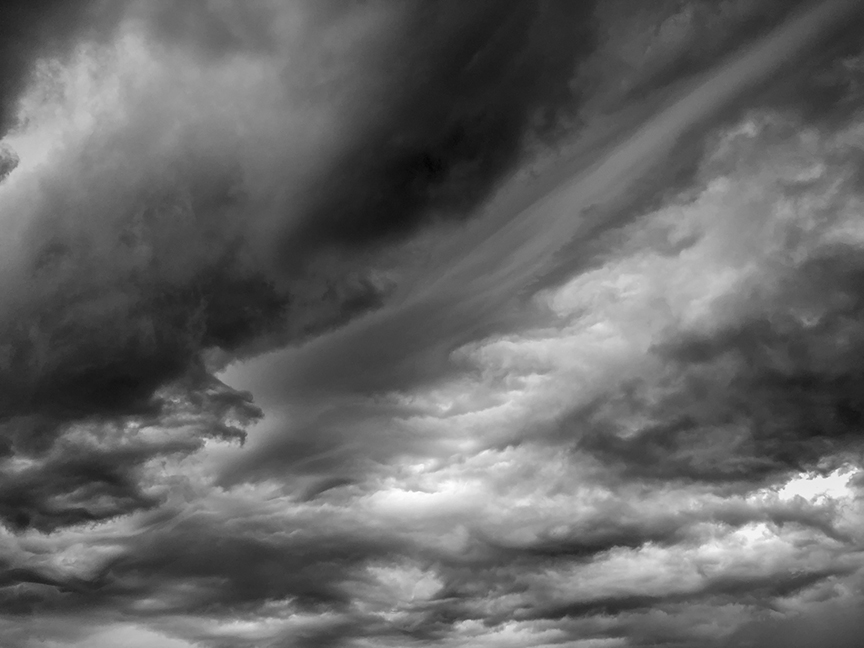


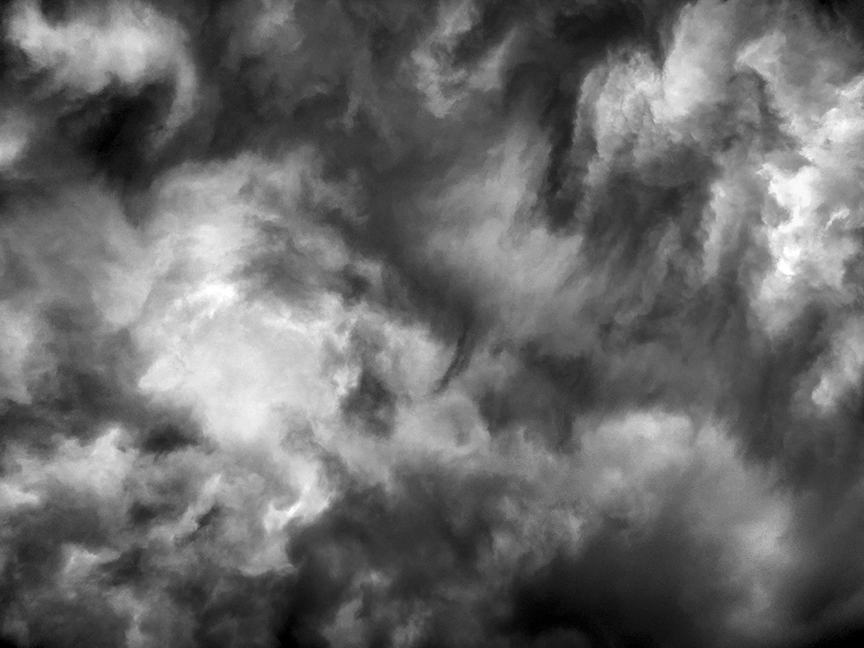


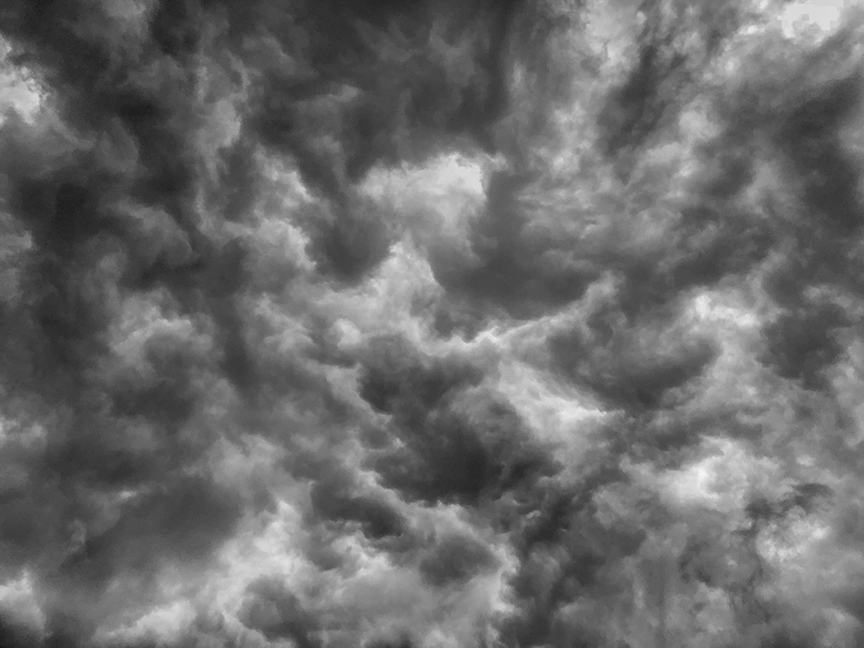


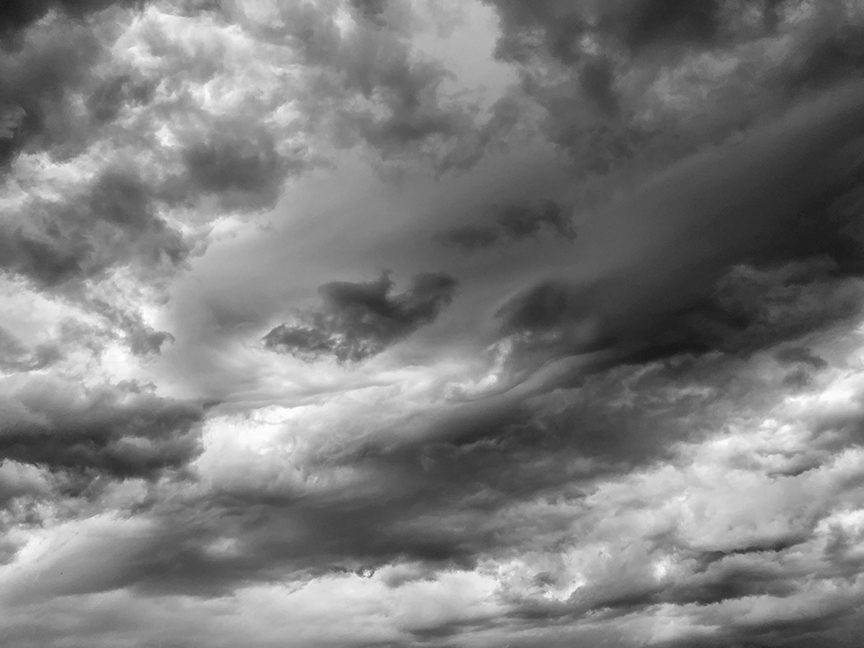


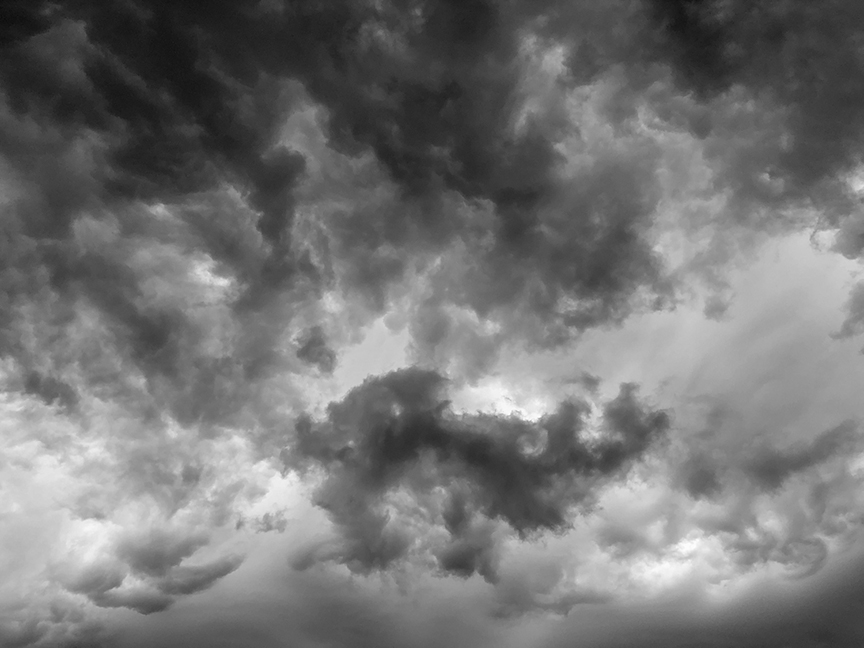


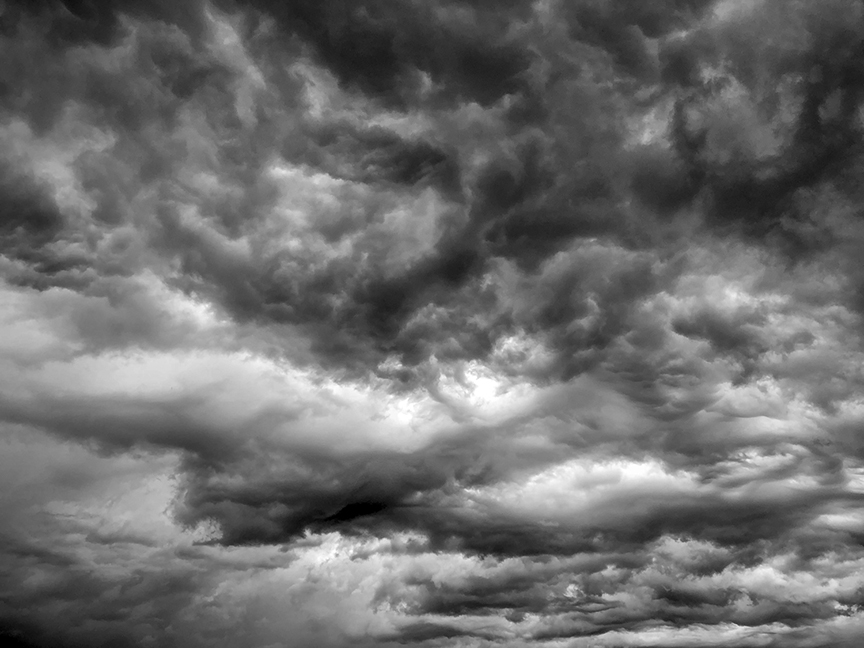


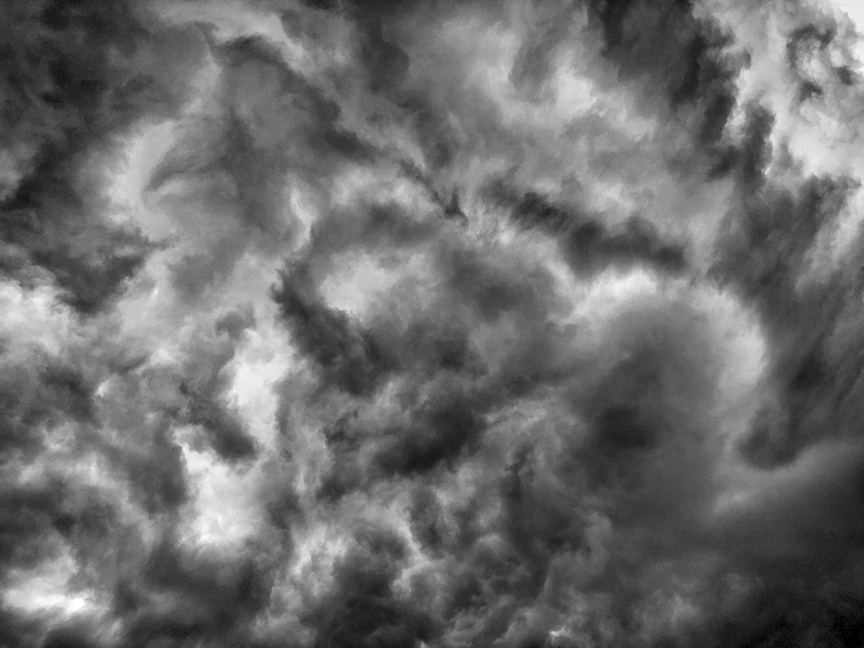


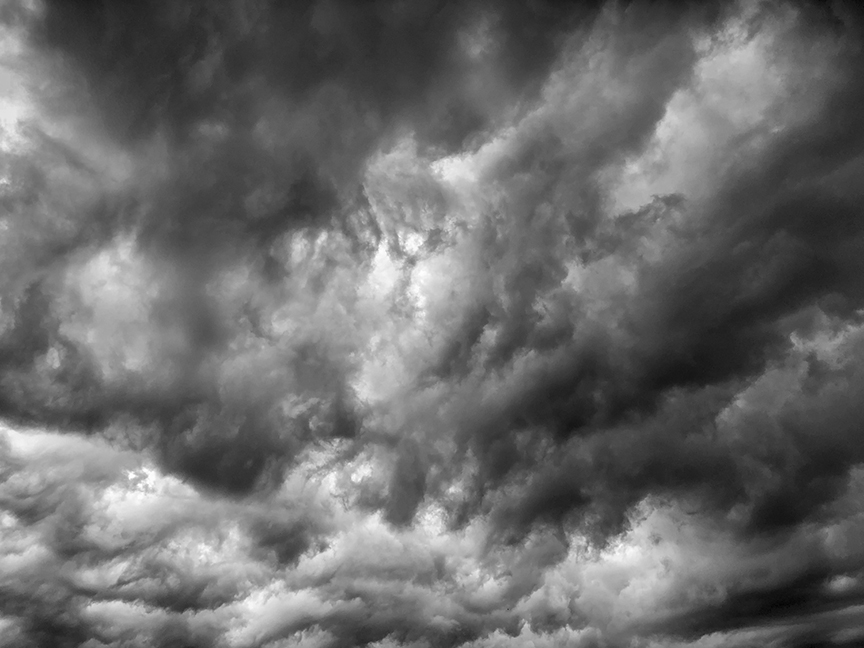


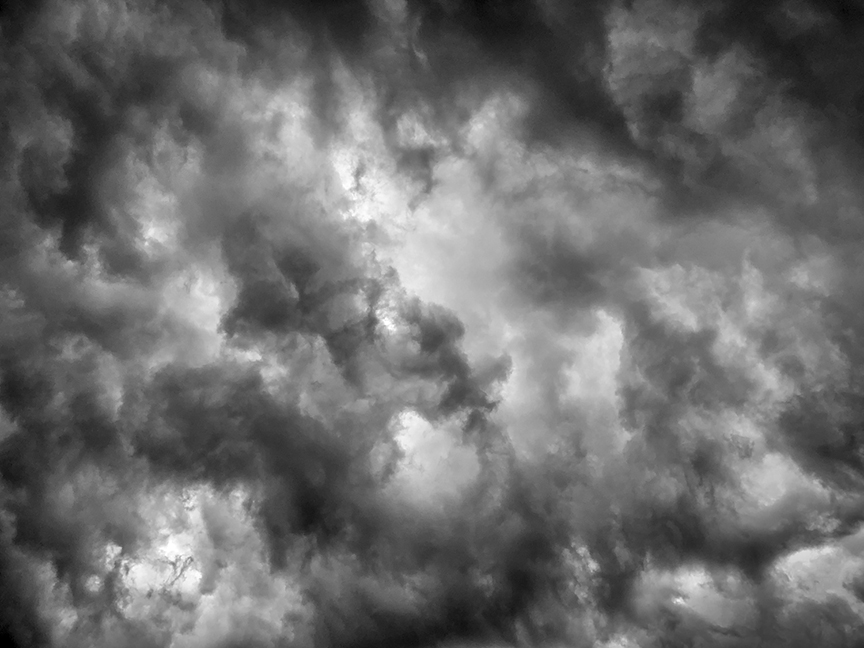


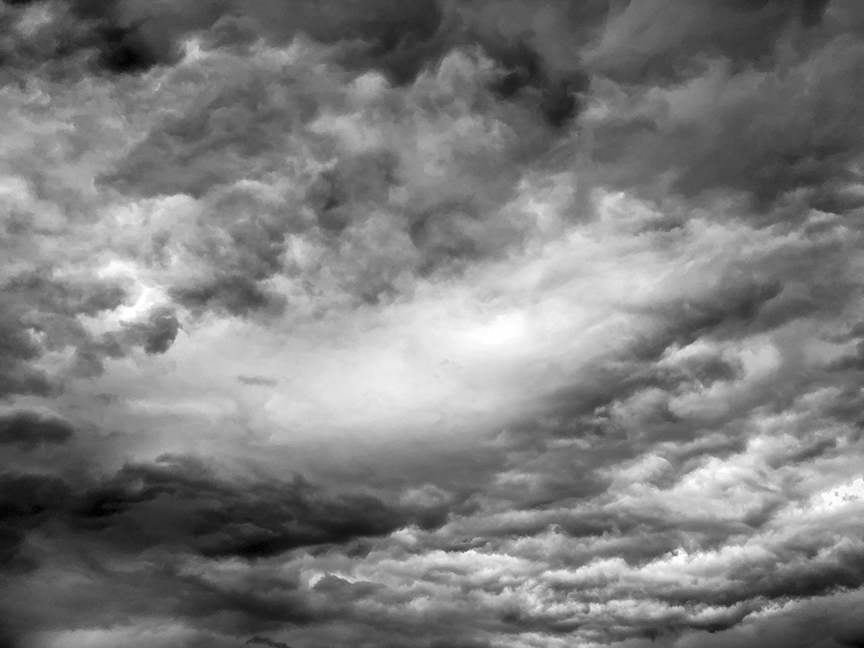


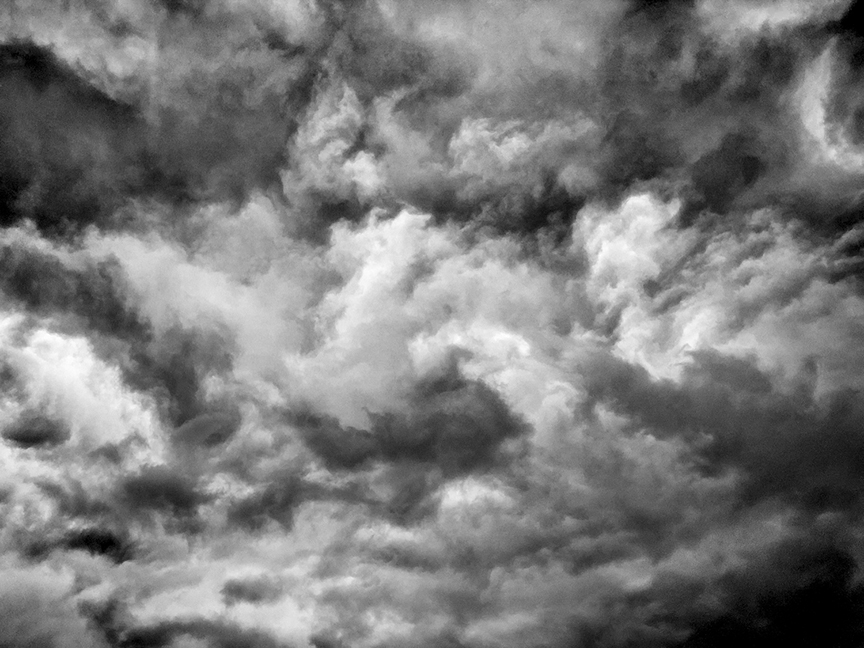


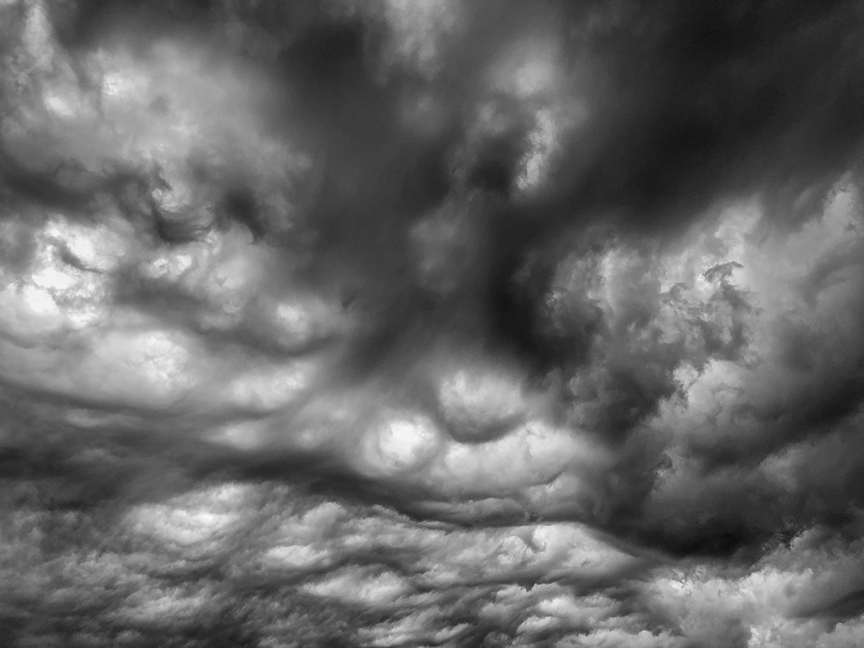


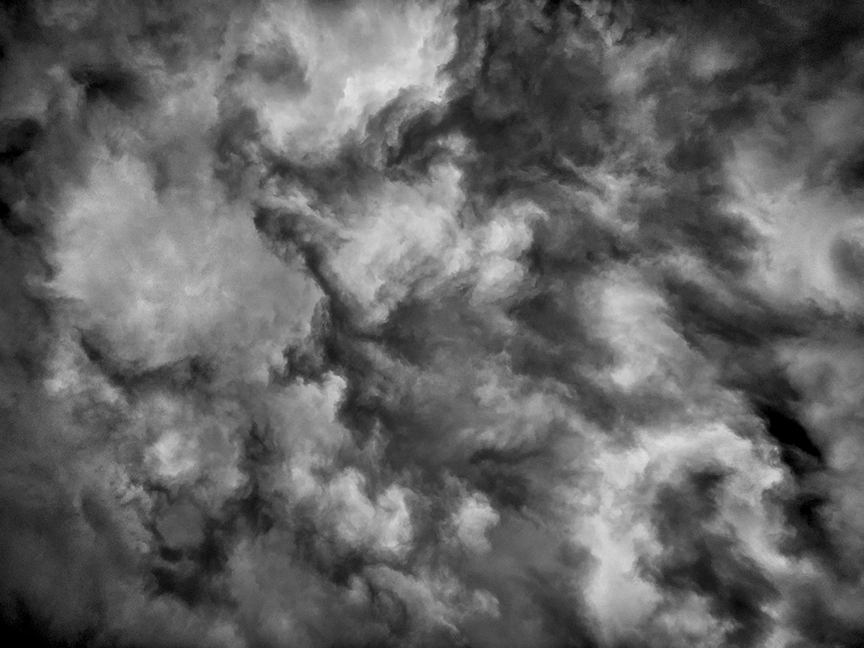


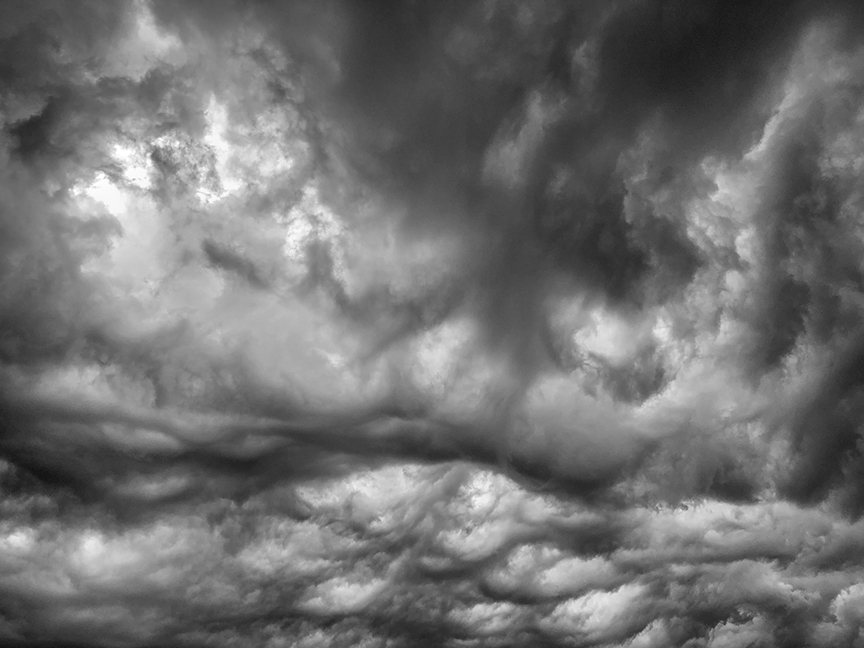


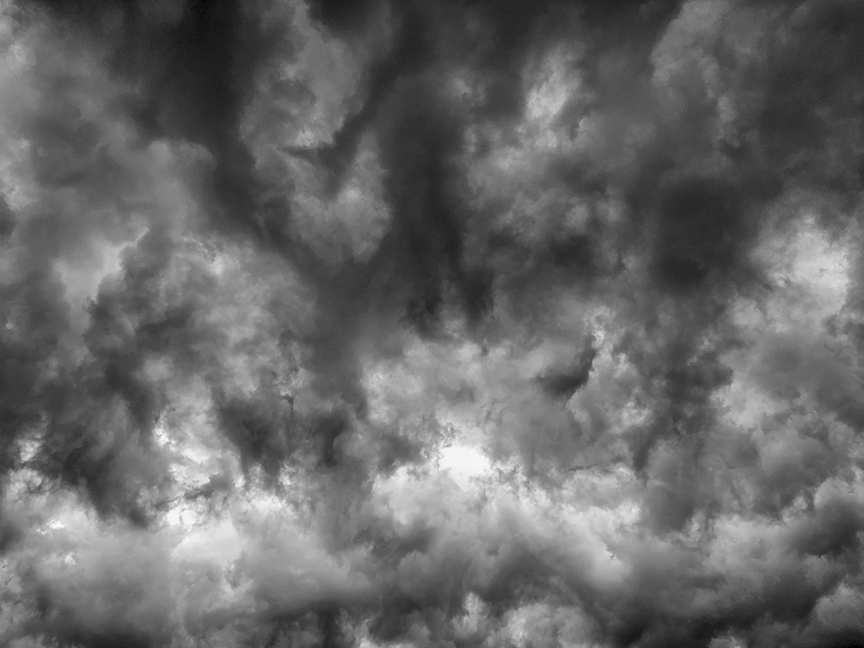


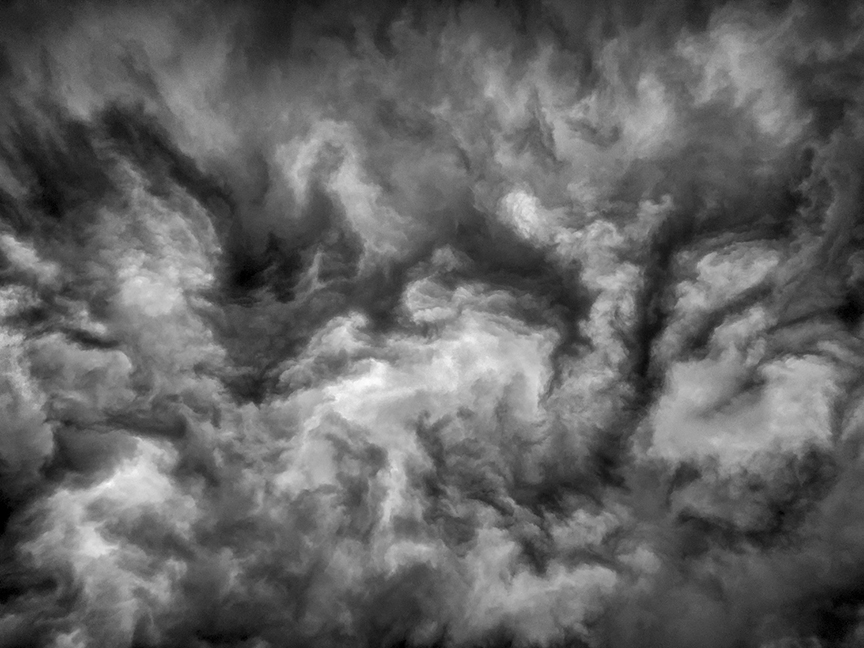


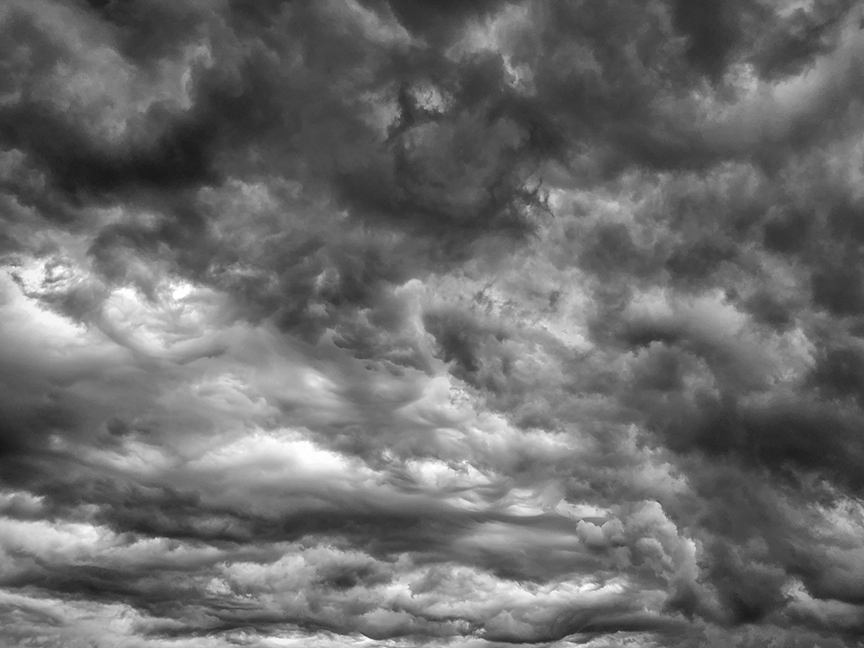


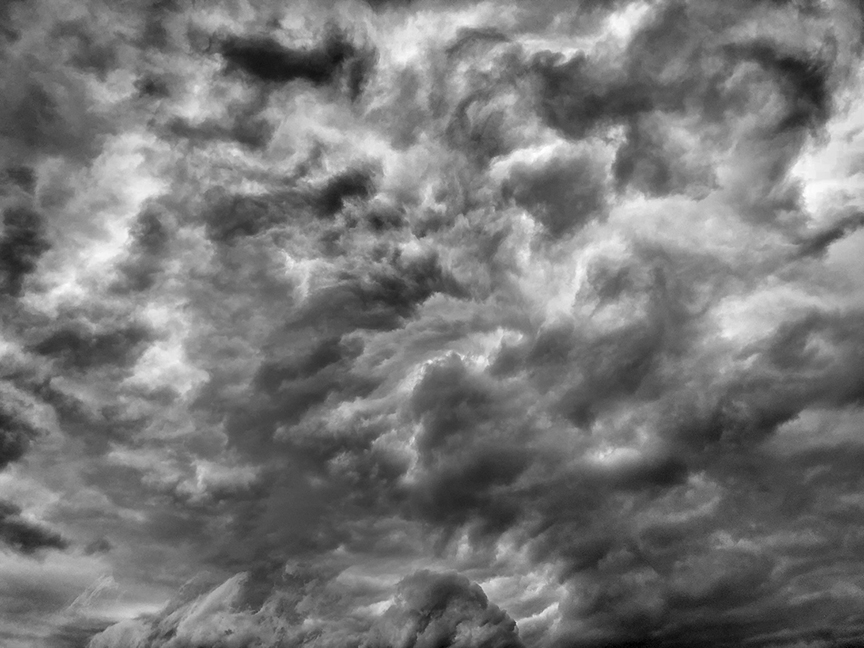


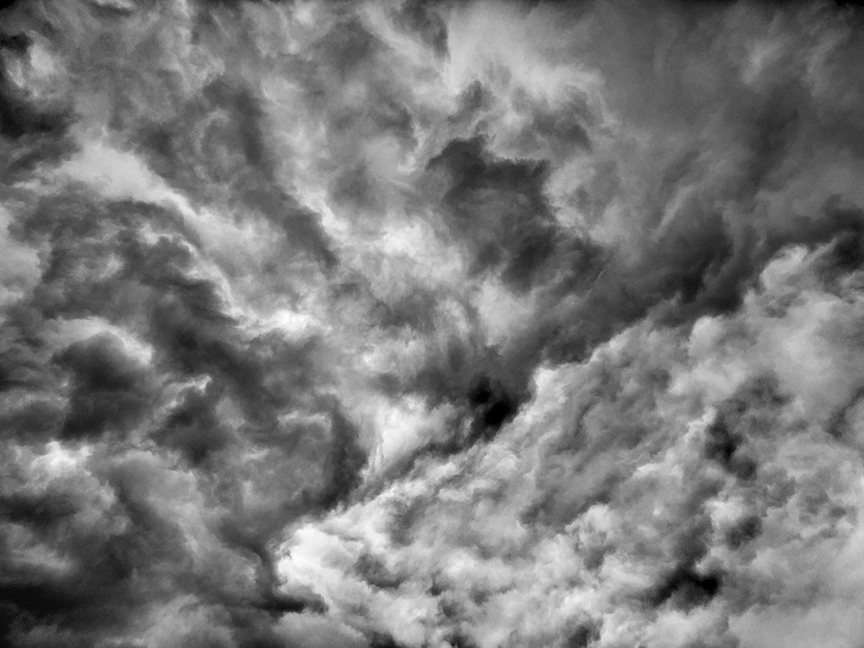


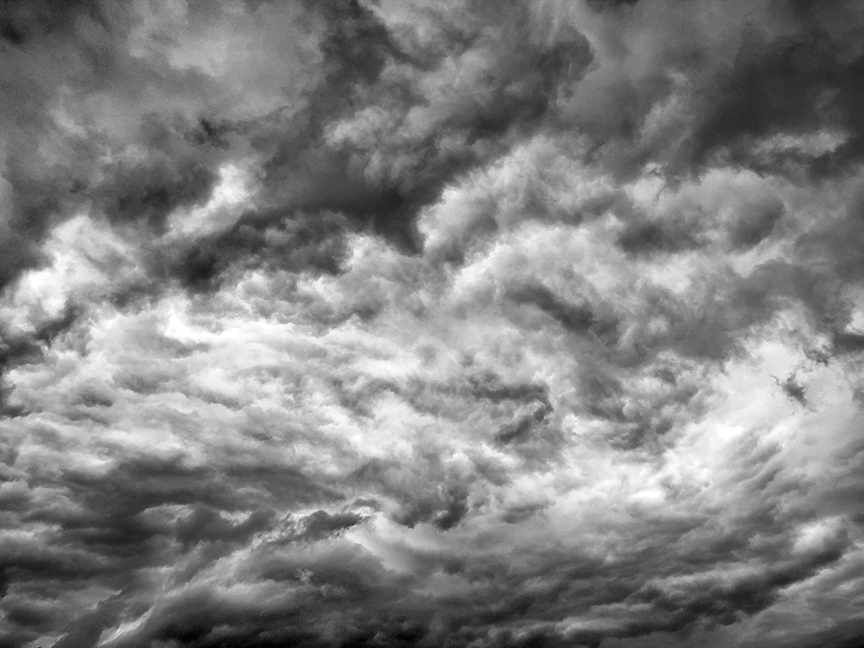


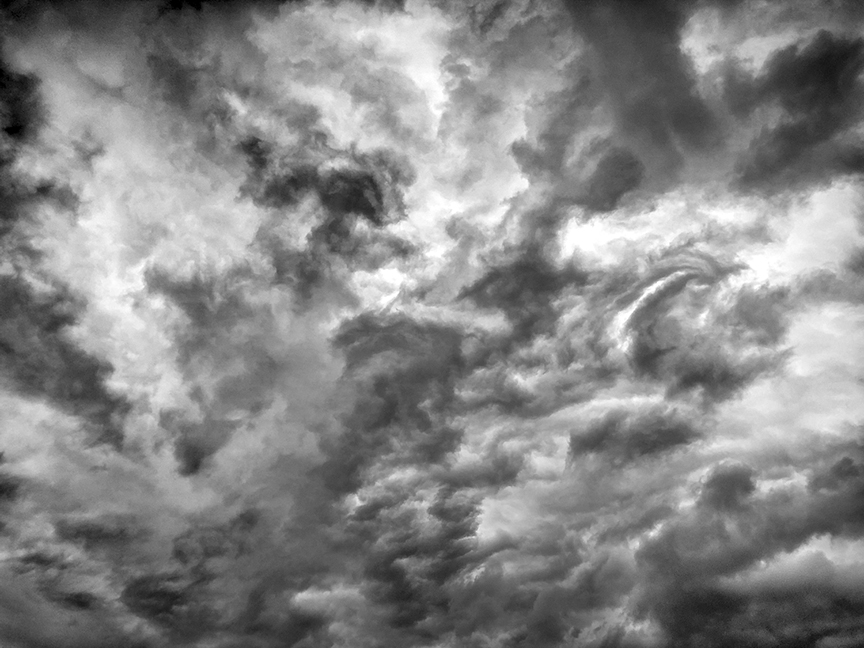


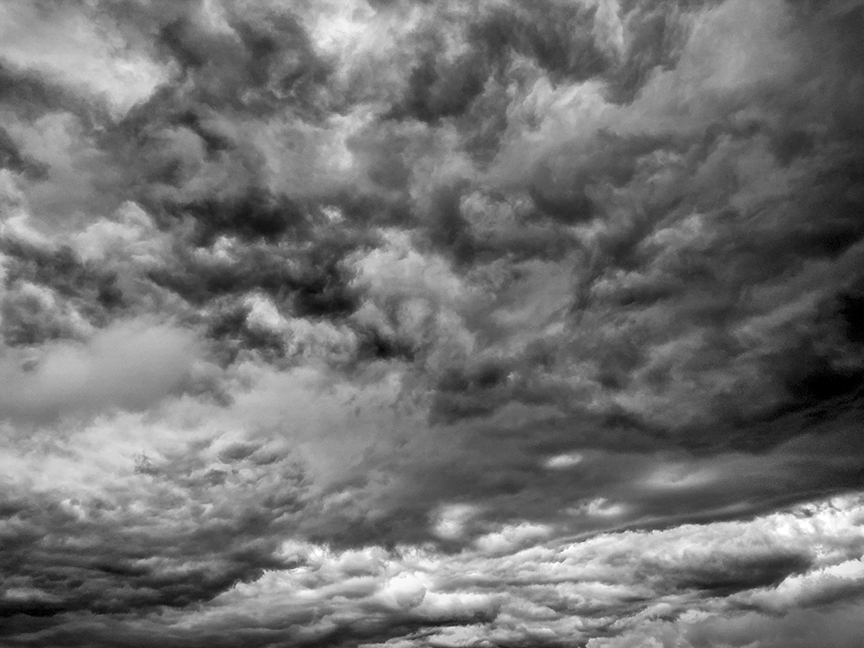


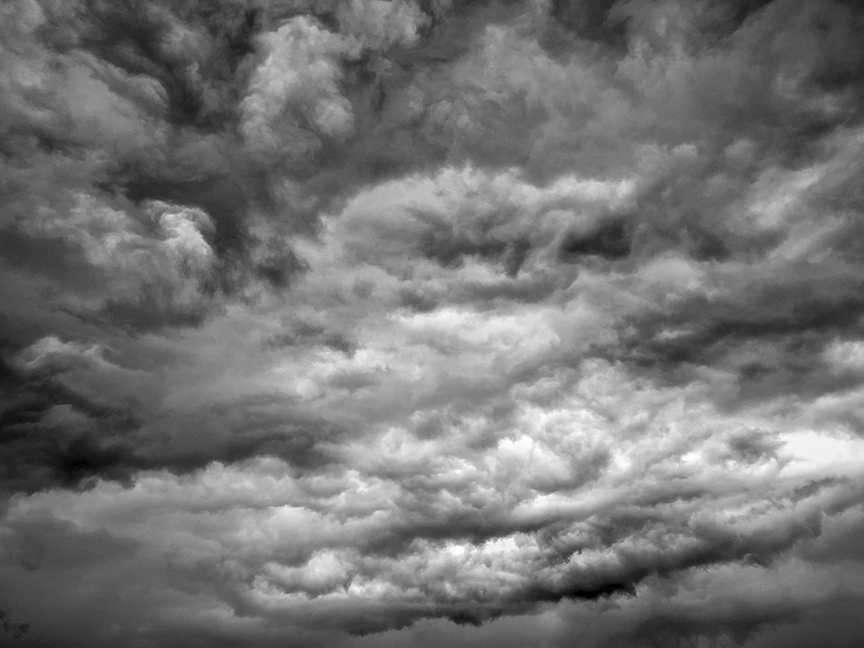


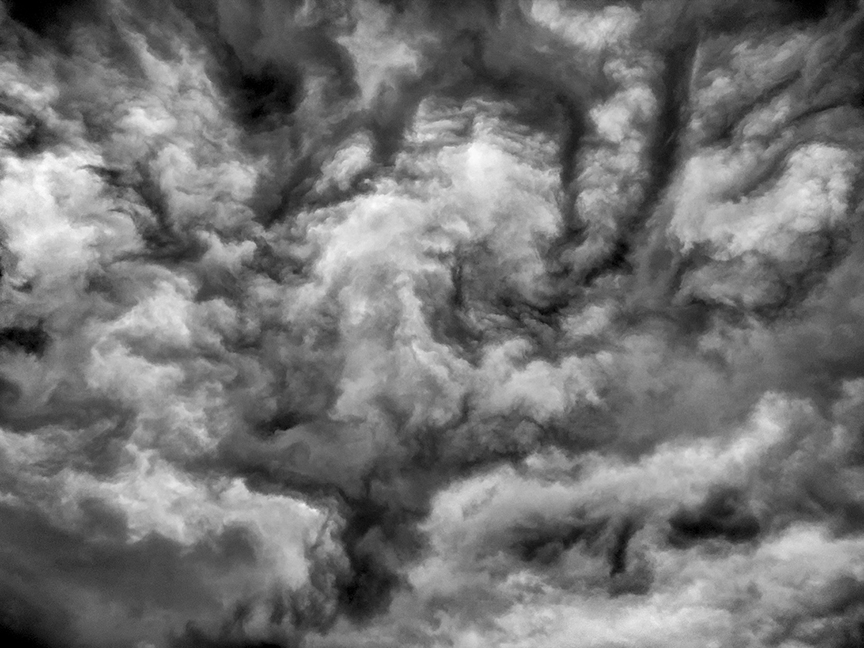


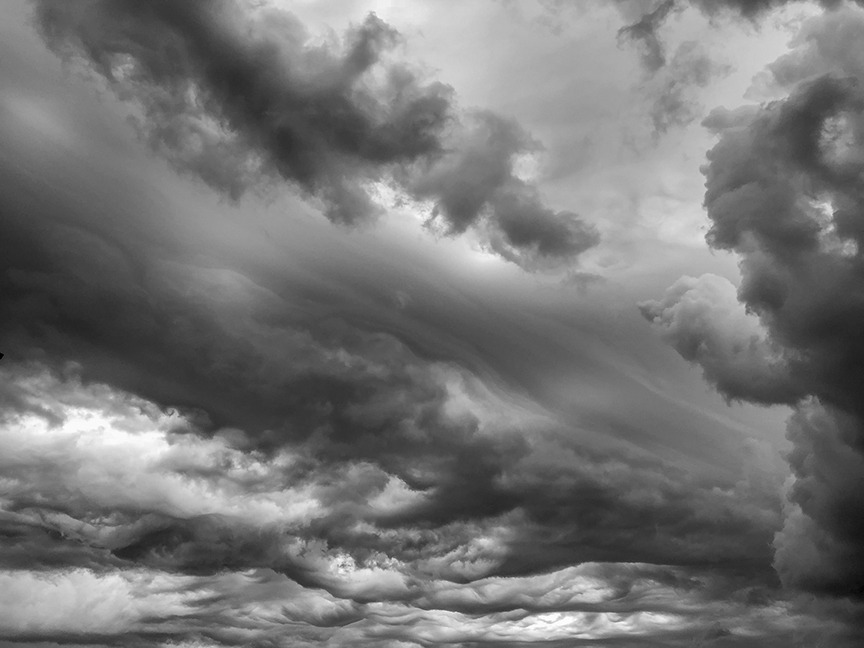


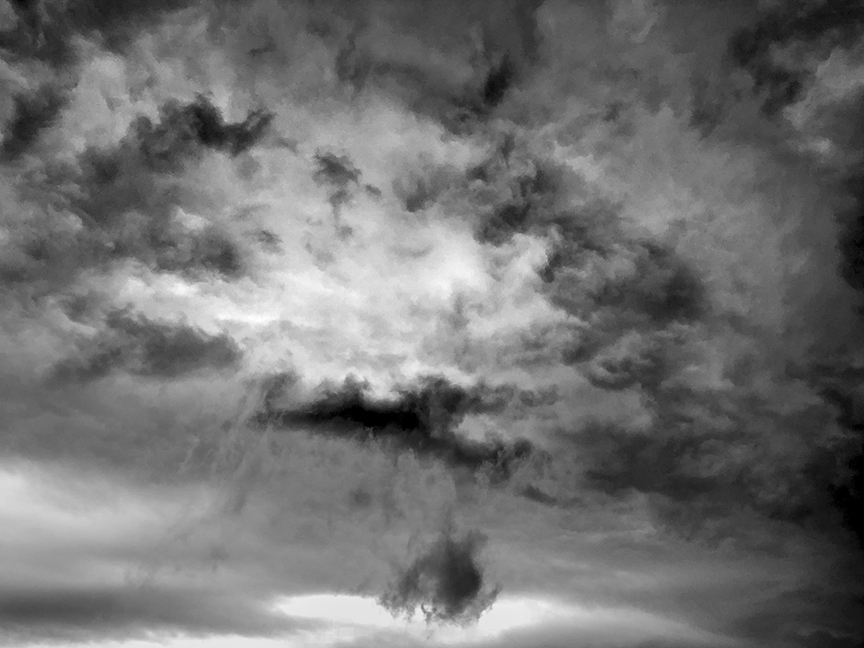


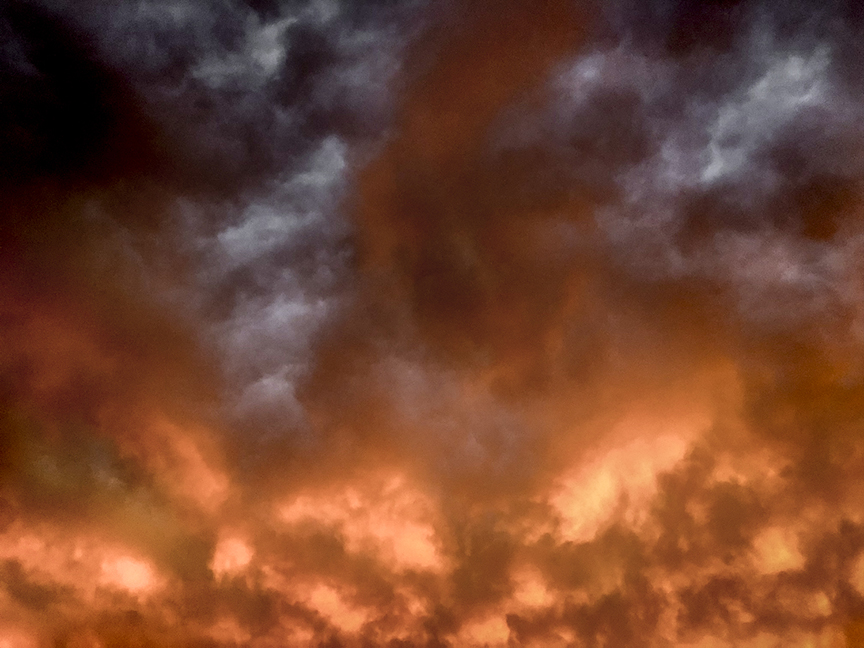


equivalent to what?
In the Midwest, there is no shortage of sky. One simply needs to look up to experience a real-world cinerama dome that provides Midwesterners with intimate views of storms, which are, often, awesome sights to see and frightening phenomena to experience. During two hot summer days in 2018 while visiting my family in Southern Illinois where I grew up, the sky suddenly filled with dramatic cloud formations. The only camera I had with me was my iPhone, so for several years these pictures existed as just one of the countless memories that I carry around in my pocket. To my surprise, these low-resolution files enabled me to produce prints that capture the surreal sensation of nature shapeshifting before my eyes. The photographs in this series alternate between recognizable images of cloud formations blanketing the sky and nearly indecipherable abstractions of a swirling and liquidous darkness penetrated by slivers of white light, and then, the sequence startlingly ends with the sky seemingly on fire.
The most obvious touchstone for this work is Alfred Stieglitz’ series of photographs titled Equivalents. Stieglitz wanted his photographs to go beyond depicting a particular subject. Stieglitz stated that he wanted “through clouds to put down my philosophy of life.” Richard Misrach’s series Non-Equivalents is a more contemporary artist’s work that provided inspiration and some level of permission to confront such an iconic series from the history of photography. In a review by Susan Kandel about Misrach’s work she states, “He [Misrach] means to frustrate the metaphorical dimension of the photographic image, which Stieglitz courted so assiduously.” Another artist who has responded to Stieglitz’ Equivalents is Sherrie Levine. In 2006, she created a series titled Equivalents: After Stieglitz 1-18. In this group of eighteen prints, Levine, through a digital process, averages each of Stieglitz’ full tonal range prints down to a 6 x 8 grid of 48 grayscale pixels per image. This process removes our ability to recognize the original subject matter. Thus, Levine’s title becomes paramount to our ability to decipher their meaning, yet, even then, only if the viewers have familiarity with the historical precedent. These references are not necessary to appreciate my prints, but they are a few of the artists whose work helps contextualize my pictures of clouds.
In contrast to Misrach’s rejection of the “metaphorical dimension” that is foregrounded in Stieglitz’ series or Levine’s digital reinterpretation/reduction of them, I embrace the metaphorical potential of the photographs in Equivalent to What? as well as their capacity to exist as records of some awe-inspiring storms. Should one read these photographs of stormy skies as synonymous to how I felt at a particular moment in the past, a reflection upon those feelings today, or are they harbingers of what the future may hold? To put it more simply, are the prints—or, for that matter, the image files that still exist in my iPhone’s library along with thousands of snapshots—more about yesterday, today, or tomorrow? Whatever the answers are to these questions, I am experiencing a shift in my understanding and appreciation of beauty and transcendence, and where they reside in our day-to-day lives. The way I see it, the sublime has entered a new era, it is now in our pockets.